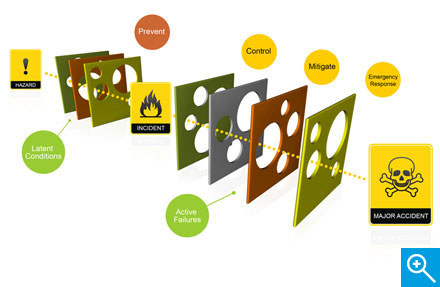8.2
Process Safety Barriers – Monitoring, Control and Audit
Audit, Assurance, Management Review and Intervention
The essential attributes of an effective monitoring, control and audit system are defined in Element 20: ‘Audit, Assurance, Management Review and Intervention’ of the Energy Institute High Level Framework for Effective Process Safety Management.
Click on the Resources icon and then follow the link to the Energy Institute’s High Level Framework for Process Safety Management, then scroll down to element 20.
8.4
Process Safety Barriers – Monitoring, Control and Audit
Active Failures and Latent Conditions
Revisiting two important concepts
Latent Conditions
Latent conditions are error conditions (such as design and maintenance, as well as inspection, procedural or organisational shortcomings) that are present within the system some time before the onset of a recognisable accident sequence.
They may lie dormant for long periods before combining with active failures to allow penetration of all the barriers. In other words, all the Swiss Cheese holes are aligned.
Active Failures
Active Failures are the unsafe acts committed by those people at the sharp end, predominantly operators and maintenance technicians. These can be lapses, mistakes or procedural violations. They have an immediate, but usually short-lived impact on the defensive barriers.
They often occupy the spotlight on subsequent accident investigations as they tend to be the immediate ‘triggering event’.
